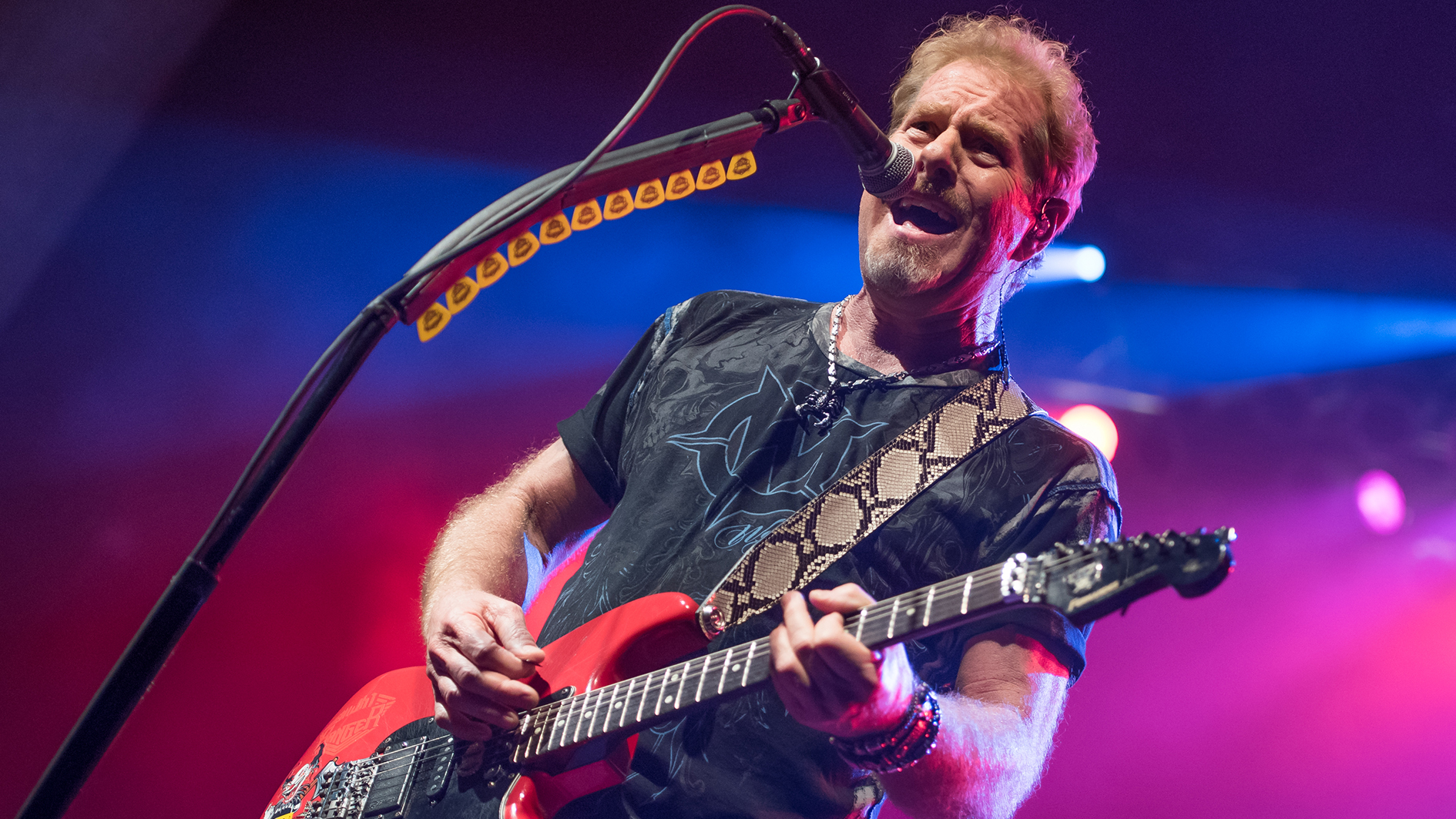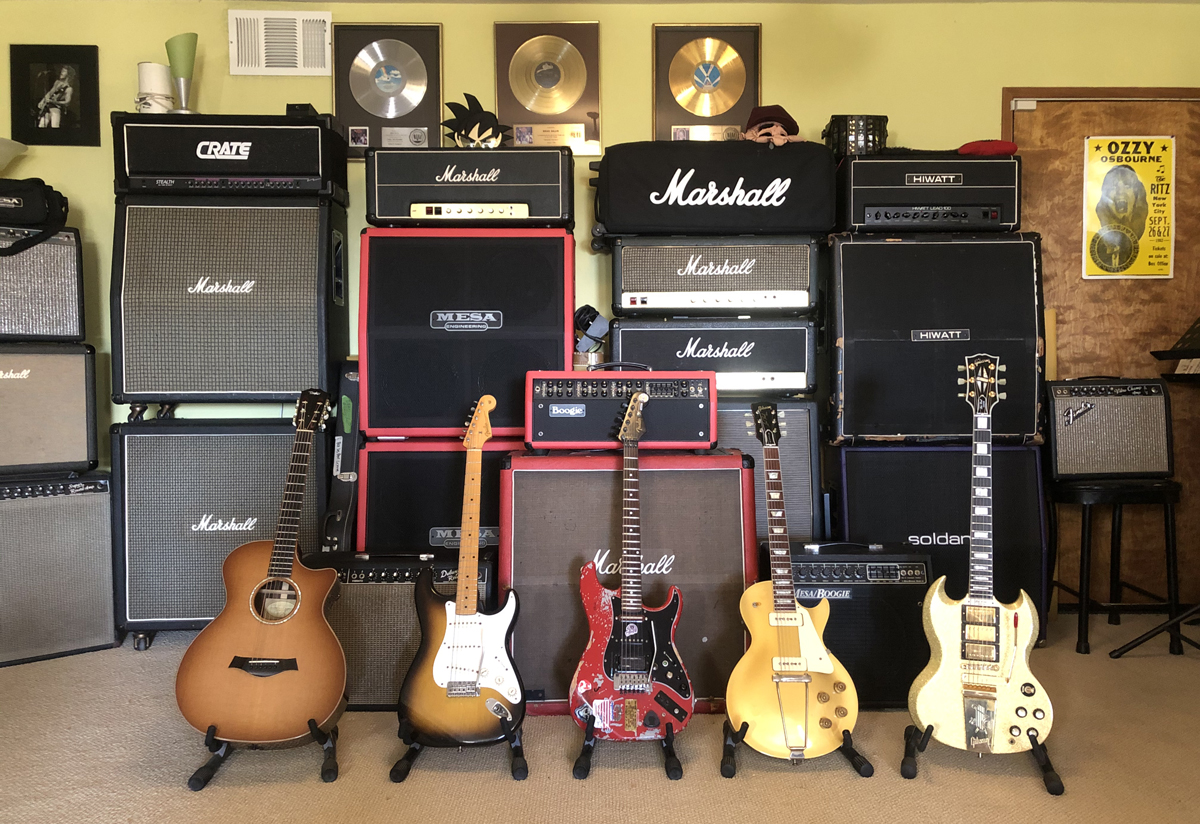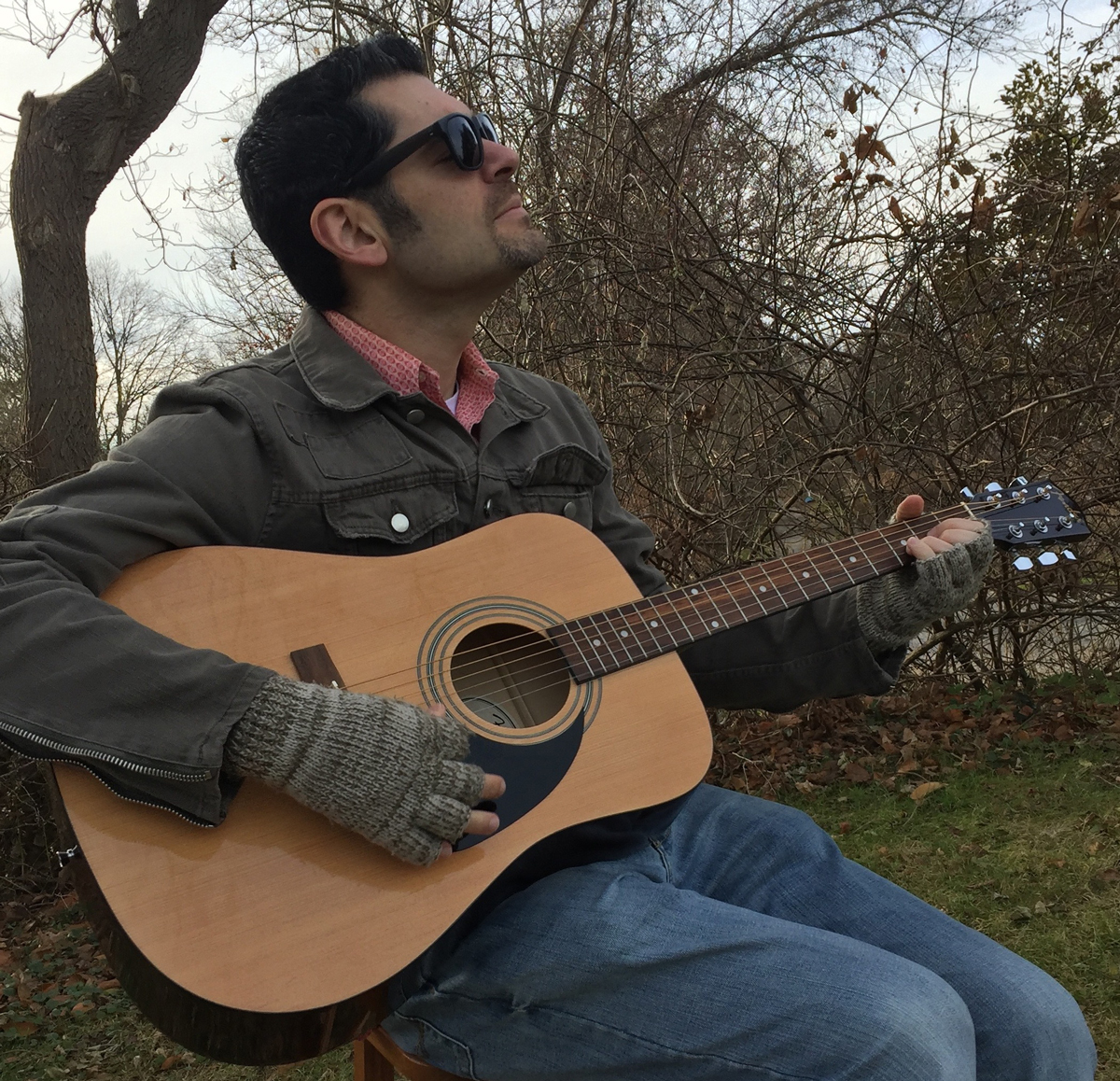Brad Gillis: “My first gig with Ozzy was horrendous – at soundcheck we only played 7 of the 18 songs on the setlist, and Ozzy didn't even show up!”
The Night Ranger guitarist recalls playing with The Prince of Darkness after Randy Rhoads' death, and details the band's forthcoming album, ATBPO

It’s never easy replacing a recently deceased guitar legend. But for a spell, Brad Gillis did just that after Randy Rhoads passed away in 1982 – lending a hand and helping Ozzy finish his tour commitments and get back on track, as well as being featured on the all-Sabbath Speak of the Devil live release.
However, instead of carrying on with Ozzy, Gillis opted to return to his main band, Night Ranger. And almost immediately, the band hit the big-time – scoring such massive MTV/radio hits as Don’t Tell Me You Love Me, (You Can Still) Rock in America, and Sister Christian.
And Gillis still provides scintillating six-string work for Night Ranger, who released their thirteenth studio effort overall, ATBPO (short for “And the Band Played On”) on August 6 – as well preparing a third solo record (featuring Gary Moon on vocals and Derek Sherinian on keys) and another project (featuring Renan Zonta, Billy Sheehan, Alessandro Del Vecchio and Dann Huff) for release later this year.
Which guitars, amps, and effects did you use on ATBPO?
“As a vintage guitar and amp collector, I’ve got quite a lot to choose from. I used a few of my staple guitars – my ’62 red Strat, my 1971 Gibson LP Custom with Floyd Rose, and my 1957 Strat on the ballads.
“I used my Taylor 12 fret proto acoustic on the record, too. I’m low-key with guitar effects, maybe a little chorus. Other effects were added later in the mix.
“As far as amps, I used my Mesa/Boogie Mark V through Marshall bottoms, Guitar Rig, and a great little box – the Boss GS-10. And going through the Radial Injector, that gives me one input and six outputs – I can combine many guitar sounds at once.”
Get The Pick Newsletter
All the latest guitar news, interviews, lessons, reviews, deals and more, direct to your inbox!
Which new Night Ranger songs are you most proud of guitar-wise?
“Breakout, which showcases the harmony guitars, and Jack’s slamming voice. And a few other rockers, like Monkey, Cold as December and the ballad, Can’t Afford a Hero, is one of my absolute favorites.”

How did you come up with “the Floyd Rose flutter”?
“That was a total accident back in the day. Standing in front of my mirror with my guitar, I was trying to come up with some cool stage moves, and when I started banging on my guitar, I noticed a fluttering sound.
“After getting more into the source, I found out that the Floyd Rose was shaking. Now, all my guitars are set up floating, so you can raise the bridge up or down. So, that motion made it shake. I figured out by flicking the end of the whammy bar was an easy way to bring out that ‘cricket noise’.”
What do you recall about the solo in Sister Christian?
“I remember at Image Recording in Los Angeles doing the first couple of records, when we were a young band and excited to get into the studio and cut records. I had always worked off of natural sustain – mainly through a cranked amplifier.
“When I went in and cut the Sister Christian solo, I couldn’t seem to get that sustain without using some type of pedal. So, our producer, Pat Glasser, suggested we max the crap out of the amp, and pumped the speakers in the control room creating a loop effect, where I could stand right in front of the playback speakers, and get massive sustain.
“So, I incorporated that into the solo – and in a lot of other songs in Night Ranger’s history.”
What was it like recording Ozzy’s Speak of the Devil live album?
“I remember going into SIR Studios in New York with Rudy Sarzo, Tommy Aldridge, and me. Because we didn’t use keyboards, Don Airey was not involved in the process.
“We rehearsed for a few days, going over all the Sabbath material, and went right into The Ritz in New York, to record both nights. They took the best performances from both shows, creating the record.
“My guitar tech Mark Newman and I ended up getting a great guitar tone – running two [Mesa/]Boogie Mark IIC amps stereo with a 10-millisecond delay, a slight chorus panned left and right. That’s how we created that sound.”
What are some other memories of your time with Ozzy?
“You have to realize that after the sad death of Randy Rhoads, the band was going through a lot of emotional stress throughout the rest of the tour. So, when I joined the band, it was quite a heavy situation.
“Bernie Tormé was playing guitar at that time in the interim, before a permanent replacement was added. And when I flew to New York for the audition, I basically found out it was just me. So, I did the best I could practicing in my hotel room every day, with a small amp, a boombox and a live board cassette with Randy that had been recorded a few months earlier.
One night before we went on stage, Sharon Osbourne came up to me, saying, ‘Bradley, you’re doing a great job. But tonight… don’t fuck up’
“At night, I would go to the shows to watch the live performance from the soundboard. I was amazed at the large castle, fire, explosives, and the hanging of the dwarf – realizing that in a few days, I was going to be up on stage. I’ll never forget the sound man looking over at me and laughing, saying, ‘You’re next buddy!’
“My first night was quite a horrendous experience – because not only was I scared to death, at soundcheck, we only played seven out of the 18-song set, and Ozzy didn’t even show up. My first gig was sold out in Binghamton, New York for 8,000 people. That was basically my entrance into Ozzy’s world.
“I ended up botching Revelation (Mother Earth), as I ended up coming into the fast section too early, and the whole band looked at me like, ‘What the hell are you doing?’ I stopped playing, regained my composure, and finished out the song and the set – with no other major mistakes.
“The next night before we went on stage, Sharon [Osbourne, Ozzy's wife] came up to me, saying, ‘Bradley, you’re doing a great job. But tonight… don’t fuck up.’”
Did you ever meet Randy Rhoads?
“I never had that chance. But I did see Ozzy and Randy in 1981 at the Day on the Green in Oakland, California. And at that time, Randy was being touted as ‘the next Eddie Van Halen’. And when I saw that show, I was totally blown away by his performance.
“Around that time, I had a club band called the Alameda All Stars, that I had thrown together in 1980 to keep my chops up, playing locally in the San Francisco Bay area – and we threw in a few Ozzy songs [Crazy Train and Flying High Again].
“I first met Ozzy in the master suite at the Helmsley Palace Hotel in New York. I had my red Strat, no amp, and played him Flying High Again.
“How surreal to be sitting at the edge of his bed, with him cross-legged on the floor singing up to me while I played the song! Once I got through the solo he jumped up, gave me a big hug, and said, ‘Brad, I love you. Pull me through.’”
Night Ranger opened for Kiss on their Creatures of the Night tour – that must have been something special.
“That was a great experience for us. I had just finished up seven months with Ozzy, so stepping into opening for Kiss was comfortable to me getting right back into large venues.
“The guys in Kiss – especially Gene and Paul – were very gracious and gave us good stage room and loved to hang out. At one point, I actually tried on Gene’s 30-pound stage boots!”
Chart-wise, Night Ranger was doing better than Kiss in the US at the time – Dawn Patrol peaked at Number 38 on the Billboard 200, while Creatures peaked at Number 45.
“We were lucky enough to jump out of the gate with the up-tempo song, Don’t Tell Me You Love Me, which featured Jack’s haunting vocal and twin-guitar harmonies.
“MTV had just come out with a 24/7 format, and they didn’t have enough videos to run all day/every day. So, when we gave them our new video, they were rotating us 25 to 30 times a day – which didn’t hurt us at all, because MTV was the latest/greatest, and it gave the audience a face to put with the music.”
How is it playing with Keri Kelli?
“I love playing with Keri Kelli. He is one of those guys that has pretty much does it all. He’s been in so many bands and has really put 100% in Night Ranger these past 7 or 8 years. He kicks ass on this new record, and we really had a lot of fun doing harmony solos and making this new album shine.”
- ATBPO is out on August 6 via Frontiers Music.
Greg is a contributing writer at Guitar World. He has written for other outlets over the years, and has been lucky to interview some of his favorite all-time guitarists and bassists: Tony Iommi, Ace Frehley, Adrian Belew, Andy Summers, East Bay Ray, Billy Corgan, Alex Lifeson, Geddy Lee, Les Claypool, and Mike Watt, among others (and even took lessons from John Petrucci back in the summer of ’91!). He is the author of such books as Grunge Is Dead: The Oral History of Seattle Rock Music, Shredders: The Oral History of Speed Guitar (And More) and Touched by Magic: The Tommy Bolin Story.
“I heard the Money solo and thought, ‘This is amazing!’ So I sent David a telegram saying, ‘Remember me? I'm in a band now called Roxy Music’”: Phil Manzanera on his friendship with David Gilmour, and the key to the Pink Floyd man's unmistakable tone
“It’s really quite genius, but also hard to learn – it sounds insane, but sometimes the easiest songs still get me nervous”: Kiki Wong reveals the Smashing Pumpkins song she had the most trouble with













